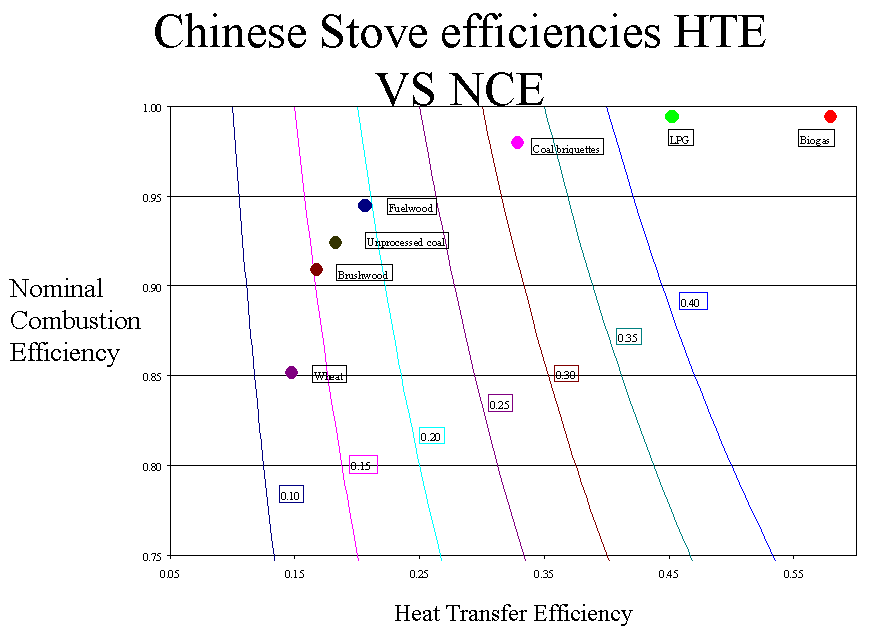
SHORT PRIMER ON STOVE EFFICIENCIES
Kirk Smith May 4, 2002
Combustion efficiency (CE) may not be worth pursuing from an overall efficiency (OE) standpoint, but is very much worth pursuing from a pollution standpoint because pollution emissions are a direct function of (1-CE). Thus, a relatively slight lowering of CE, which may produce only a slight change in OE, can produce substantial increases in pollution, even on a per meal basis.
Definitions
--The pollutants of interest are nearly all PIC - products of incomplete combustion (CO, particles, volatile organics, methane, etc.)
--OE is function of two internal efficiencies: OE = NCE * HTE
--Nominal Combustion Efficiency (NCE) = percent of fuel carbon released as CO2 ~percent of fuel energy converted to heat
--Heat transfer efficiency (HTE) = OE/NCE = percent of heat absorbed by pot
--NCE = CO2/(CO2 + PIC) -- on a carbon basis
Nominal Combustion Efficiencies of Indian Stoves (Smith et al., 2000)
- Gas: ` 99% (98-99.5)
- Kerosene: 97 (95-98)
- Wood: 89 (81-92)
- Crop residues: 85 (78-91)
- Dung: 84 (81-89)
(see attached for Chinese stoves; from data in Zhang et al., 2001)

Typical changes in efficiencies in an "improved stove" (from improvements that increase HTE greatly but reduce NCE slightly)
| Stove | CE | HTE | OE |
| Traditional | 97 | 15 | 14 |
| Improved | 90 | 30 | 27 |
Fuel efficiency increases by 27/14 = 1.93x !
PIC (pollution) increases by (1-0.90)/(1-0.97) = 3.33x per unit fuel !!
and thus PIC increases by 3.33/1.97 = 1.7x per meal !!!
Of course, if the PIC is directed outside through a chimney, the human exposures may still be less. Outdoor and global pollution levels will be higher, however.
We have observed this phenomenon many times in our measurements
Kirk Smith
May 4, 2002